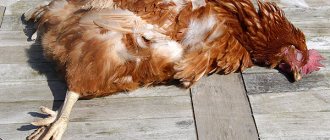Danger of rats
Rats aggression
Rat bite
How dangerous are rat attacks on humans, is there a threat to health and life, probable causes of bites and what to do after a rodent attack - the answers to these questions will interest many readers.
Rat lifestyle
Rats are synanthropic animals that settle near people, get used to their presence and interact with humans throughout their lives. They lead an active nocturnal lifestyle to minimize contact with humans.
Most of the life of gray and black rats is spent in urban environments, where they find food and establish their existence. Omnivores, feeding not only on plants, fruits, and vegetables, but also obtaining animal protein by hunting small animals and birds, do not disdain carrion and garbage. Among many species of rats, cannibalism occurs - with prolonged fasting, they are able to eat their fellow rats.
On a note!
Because rats eat everything, including garbage, rotten waste, and animal feces, the microflora in their mouths is very diverse. Rats and their bites are dangerous because viruses and harmful bacteria enter a deep wound and with a 90% probability are capable of causing suppuration and an inflammatory process.
What diseases do mice carry?
What diseases do mice carry?
Although mice are smaller than rats and seem to look more harmless, they cause no less problems. Mice carry diseases no less dangerous to human health.
Mouse typhus
It is transmitted not only by mice, but by rats. After contracting the infection, complex symptoms occur, including fever, high temperature, coughing and choking attacks, severe headaches and muscle pain. If an elderly person or one with low immunity is infected, the disease can be fatal for them.
Venezuelan encephalomyelitis
House mice and hamsters are often infected with the virus. The most susceptible category of people are pregnant women and the unborn baby, since if the mother is bitten by a rodent during intrauterine development, the fetus may develop congenital abnormalities. The child may be born with mental disabilities.
Hantavirus infection
During rising summer and autumn temperatures, there is an outbreak of growth in mouse populations. This is when the infection spreads.
Warm climatic conditions are favorable factors for it. Infection occurs through airborne droplets or through objects contaminated with mouse feces.
Tularemia
Carried by both types of rodents. Due to the high population density of mice, infection can be transmitted through the air and contaminated food and water.
Pseudotuberculosis
Infectious agents can remain dormant for a long time. The same applies to food products that are contaminated with bacteria.
For example, storing vegetables over the winter can trigger an outbreak of pseudotuberculosis because they are a treat for rats and mice, which leave their feces on them.
Rabies
A very dangerous infection. It can cause inflammation of the brain and spinal cord. It is transmitted through household contact and through rodent bites.
Streptobacilosis
The simplest bacteria affect the human brain and lymphatic system. Transmitted by an animal bite.
Read on the topic - Basic concepts of the rodent control process (expert opinion)
Carriers of infections
The danger of rats
What is dangerous about rats and mice and their bites is that rodents are carriers of many infectious diseases, including such deadly ones as tetanus and rabies, as well as:
- leptospirosis - caused by leptospira, affecting internal organs and the nervous system, the mortality rate from it is 16% of the number of patients; the disease is manifested by high fever, pain in the head and calves, and enlarged liver;
- listeriosis – pathogenic bacteria-listeria are transmitted, especially dangerous for pregnant women, causing miscarriage;
- toxoplasmosis – when pregnant women are infected, the fetus is affected;
- yersiniosis - manifests itself as severe intoxication, affecting the gastrointestinal tract, musculoskeletal system and liver, causing severe pain in muscles, joints, head, severe diarrhea and nausea.
How dangerous is a rat and how to deal with it?
Rant! Ratatouille!
The rat population lives in your basement, in the trash bin, in a cluttered entrance, or in a shed. There are often stories from residents of the first (and not only) floors about rats stomping under the floor, gnawing, squeaking, and, moreover, crawling out through the toilet.
Even if you don't stutter after this, you could easily end up with a toilet phobia for the rest of your days. But that's not all: a rat can be infected with infectious diseases dangerous to humans: leptospirosis, tularemia, ersiniasis - about 70 diseases in total. By the way, according to rat concepts, shops, food warehouses and food processing plants are compared to human habitation, like China and Belgium. Therefore, is it possible to be one hundred percent sure that a cheerful ratatouille with a scaly tail did not run around the products we buy and bite in some places?
Humanity calls its war against rodents deratization. This term is of French origin and literally means “de-rattling” (ratus is the generic name for rats). By the way, if you don’t know, the Ukrainian word “ryatyte” means “save.” And the French “ratatouille” is a vegetable stew. Its colloquially vulgar synonyms are bodyaga, gruel, grub.
Planet of the Rats
In the east, the rat symbolizes wealth, wisdom, prosperity and fertility, and its image there is purely positive. In the West they treat this rodent with caution and disgust. To create a negative image, several terrible plague epidemics were enough, tightly linked in the mind with its carrier - the rat. What popular rumor has not accused rats of! They foretell death, and send misfortunes, and evil spirits supposedly inhabit them...
Let's put the mysticism aside and look at rats from a scientific point of view. The mouse family contains the most species of mammals known to date—about 1,700! So it is still unknown who is in charge here on the planet. On average, there are two rats for every person. From time immemorial to the present day, man has been waging an irreconcilable struggle with them, the duration of which leads to the conclusion that man and rat are equal opponents.
To get rid of rats and mice, you need to get a young, healthy cat... (Selma Lagerlöf). Unfortunately, in practice this advice is not always possible. Firstly, not every cat, even a fairly young and very healthy one, takes rats (popular rumor claims that mostly cats are capable of this), and secondly, if there are a lot of rats, as in Glimmingen Castle, there will be one cat not enough. The pipe - the method that Nils used is generally from the realm of science fiction, although ultrasonic devices similar in action to the pipe exist. They act on the subconscious of animals, causing them a feeling of fear and reluctance to reproduce. True, not everyone can afford such devices: from 50 to 150 dollars.
Everyone knows that rats are the recognized intellectuals of the animal world; they understand and remember everything perfectly: they don’t step on the same rake twice. In addition, they are terribly fertile and very quickly get used to all the drugs with which they are poisoned (apparently, considering them spices), or do not eat at all. If you don’t start fighting rats in time, there will be a lot of them, even too many.
I will give two effective grandmother’s methods. Did you know that in a house rebuilt on the site of a burnt one, mice and rats do not appear for several years? Not because they are superstitious, there is a scientific explanation for this fact. After a fire, ash remains. It has an alkaline reaction and therefore irritates the paws and oral cavity of animals. Sprinkle the subfloor of the house, the floors in a dry cellar and inside courtyard buildings with finely ground wood ash at the rate of one bucket per 5 square meters.
Another old proven method, also environmentally friendly. True, not as humane as the first. If you are a Greenpeace activist, this is not for you. If you are just a humane person and still feel sorry for the rat, you can try to imagine how your young daughter, returning home in the evening, accidentally steps on the tail of a rat, peacefully eating a bone that the dog threw during the day... The rat is in pain, it bites... Can you imagine?
Now read with confidence: you need to prepare a mixture of flour and building plaster in a 1:1 ratio, pour about half a glass into a plate and place water next to it. The bait has a pleasant smell and does not arouse suspicion. When the rodent eats and drinks, the mixture will seize in his stomach and he will die from indigestion. If the next day you introduce a new poison, and it turns out to be untouched, it means that the pioneer rat, writhing in pain, managed to run to his relatives and told him what this white death looks like.
It is believed that it is impossible to eradicate rats 100%. In 1990, deratization criteria were introduced and the permissible percentage of the area freed from rodents was designated: 80% - satisfactory, 90% - good, 95% - very good, 100% - the area is unsuitable for life (just kidding). So the goal of deratization is to establish and maintain a qualitative indicator of the acceptable level of population, at which there will be no claims from humans. Maintaining it is entirely within our power. No matter how trite it sounds: cleanliness is truly the key to health. It has been noticed: the higher the standard of living and everyday culture in a particular area, the fewer rats there are and the safer life is.
Tags: rodents, life, rats
Cases of attacks on people
According to statistics, the number of cases of rat attacks on people is quite large. Thus, in a large city, where the number of rats often exceeds the number of residents, 400-700 rodent bites occur annually. This is why it is so important to get rid of rats.
On a note!
According to statistics, in the United States up to 14 thousand people suffer from rat bites every year, and in the world this figure exceeds 3.5 million. Every year, 2 thousand people die due to diseases transmitted by rats.
Many people are interested in the answer to the question whether a rat can attack a person on its own, without any reason. After all, there are even videos posted on the Internet with examples of such rodent aggression.
Rat (endemic) typhus
Unlike epidemic typhus, the picture of which is usually presented when this disease is mentioned, the main carrier of this type of disease is not lice, but the same rat fleas that live on intermediate hosts - mice and rats.
The causative agent of typhus is intracellular parasites, special bacteria of the genus Rickettsia. Once in the human body after the bite of a flea carrier, the bacteria multiply in the lymph nodes, and then are released into the bloodstream and spread throughout the body. First of all, they damage the inner surface of blood vessels, which leads to clinical changes in many systems - from the nervous to the circulatory. The course of the disease is characterized by skin rashes, a sharp increase in temperature, fever, headaches and back pain, retardation of consciousness, as well as associated complications.
In general, rat typhus is milder than its epidemic variety and in our time is no longer fatal. It is found in both hemispheres, in regions with a fairly mild climate. However, today, for example, in the United States, about 40 cases of this disease are registered annually - mainly in the summer and mainly among rural residents.
For the prevention of rat typhus, control of rodent carriers is extremely important.
- 10 ideas on how to get rid of mice in a country house (only proven means!)
Rodent control methods that will make them capitulate.
Causes of rat aggression
Aggression of rats
The most common reasons when rats attack people:
- the animal attacks and can bite a person when there is a threat to the life of its pups or nest;
- aggression occurs in a situation when a person wants to catch a rat or kill it by driving it into a corner indoors;
- the bite occurs with the aim of satisfying the rodent’s feeling of hunger; this often happens in relation to children or sedentary adults;
- rats with rabies attack without cause.
In Russia, there are not very many cases of rat attacks, which is explained by the large amount of food that they can get without aggression or much effort. In less developed countries: in many regions of Asia, Africa, South America, incidents where a rat bites a person due to lack of food occur frequently. This is also due to the fact that the poor population catch rodents for cooking, as a result of which rats often defend themselves from hunters by jumping and biting.
Interesting!
Cases where the owner was attacked by a domestic rat during play or for the purpose of self-defense are quite common. Cats can also suffer from attacks by wild rodents, although they prefer to hunt mice.
Rats: harm to humans and methods of control
Rats are the hardiest and most dangerous animals that tend to settle next to humans. To assess the severity of such a neighborhood, you need to know everything about pests.
Facts about rats you need to know
- Rats live in the basements of any buildings, be they residential buildings, utility or auxiliary buildings, or industrial buildings. They willingly occupy commercial premises where they can find warmth and food. They especially love farms with suitable temperature conditions and an abundance of food.
- Rodents run quickly and can move distances of about 50 km in a day. Jumping pests easily cover a distance of about a meter in height and at least 120 cm in length.
- Pests dig holes in materials of any hardness with a depth of about 130 cm. They easily move along surfaces of any structure, even polished ones.
- Rats are good swimmers and can stay in water for up to three days until they find an opportunity to escape.
- Rodents' incisors grow throughout their lives. Therefore, teeth worn down by gnawing concrete and other hard materials grow back.
- If it is necessary to enter a room, an adult rat stretches out and crawls into a hole with a diameter of no more than 1 cm.
- Pests live for more than three years, constantly reproducing. In a year, one female can breed about 100 cubs.
- Harmful rodents have a unique ability to adapt. Anything is suitable for them: a refrigerator, proximity to heating elements or high background radiation.
- Over the course of a year, a rat eats more than 12 kg of food, and spoils the rest, littering it with its fur and excrement. He loves food of animal origin, cannot stand hunger and attacks his relatives or people.
Danger of rats to humans
Rats are dangerous carriers of various diseases. Infection occurs through products spoiled by rodents or through contact with harmful animals. Diseases that rats carry and transmit:
- Creeping erythema is a dangerous skin disease. May occur through contact with food spoiled by rats.
- Q fever can be transmitted if you accidentally inhale dust that contains the excrement of sick animals.
- Leptospirosis - infection occurs through food or through contact with a sick animal.
There is a risk of infection from rats and other diseases.
How to deal with dangerous rodents
If rats have entered a room and firmly established themselves in it, it is difficult to fight them. They do not pay attention to baits, avoid rat traps and do not react to poisons, developing immunity to them. In situations where pest control measures do not help, it is better to seek professional help. Disinfection-Moscow2 specialists will go to the site immediately after the call, determine the degree of danger and destroy the rodents.
To order a rat extermination service, call. You can also leave an online application and our managers will contact you at any time convenient for you.
Rat attack
Large rodents are capable of attacking and rushing at a person completely unexpectedly, often this happens in 2 ways:
- In order to scare, a rat rushes at a person and makes a jump, emitting a squeal or squeak. The reason for such an attack is fear, when the animal is driven into a corner, and it acts in self-defense.
- Cases of attacks on sleeping people often happen to drunken or homeless people who spend the night in basements, sewers, dirty corners of gateways, which rats consider their territory. However, rumors that rats ate someone whole are greatly exaggerated.
You can still get dangerous diseases from decorative rats
This note is not intended to scare amateur rat breeders. Nevertheless, the information presented in the note deserves attention, since it once again proves the potential possibility of contracting dangerous diseases from pets, in particular from decorative rats. The chance of getting infected with some nasty thing from a decorative rat is small, but it is not zero! And if you imagine that at least half of the owners kiss and lick their pets, then the likelihood of unpleasant consequences increases significantly. This information has additional value because it is documented by medical professionals.
I have already written about the fact that after any contact with a pet and its cage, play items, equipment, etc. You must wash your hands thoroughly. A number of specific diseases of rodents are transmitted, as it turns out, not only through bites, but also through ordinary household contact with a pet.
The Medical Journal of Australia in February 2012 described a case of a woman contracting Streptobacillosis in Adelaide (Australia) after she had close contact (hugging, kissing) with her pet rats.
Streptobacillosis (Haverhill fever) is a bacterial disease and is considered potentially fatal. If untreated, the mortality rate from Streptobacillosis can reach 10%. The carriers of the pathogen are rodents, usually rats, in which the pathogenic bacillus lives on the mucous membrane of the mouth and upper respiratory tract. The main cause and source of infection are rodent bites, but you can also become infected through water and food contaminated with rodent feces, through saliva and animal excrement. Despite the fact that the primary carriers of such diseases are the wild relatives of our pets, the possibility of getting sick from a domestic rat cannot be ruled out, as was confirmed by the case of the Australian patient.
Decorative rats can transmit dangerous diseases
Narin Bak, a co-author of the article in the Australian Medical Journal and a part-time infectious disease physician, said the woman was admitted to the intensive care unit with a severe headache and fever, which led to severe pneumonia and meningitis (inflammation of the lungs and brain). Dr. Buck also said that, as a rule, employees of pet stores, owners of pet rats and guinea pigs are constantly at risk for this disease. The reason for this, first of all, is basic lack of hygiene.
“Rodents as pets are becoming increasingly popular in Australia. More and more cases of Streptobacillosis are being recorded due to contact with domestic rodents,” the report says. Let us specifically note that the woman, who fortunately subsequently fully recovered, was not bitten. At the same time, she loved to kiss and hug her two pet rats. A bite, it turns out, is not necessary for infection; close contact with rodents may be enough to cause the disease. The disease can also be transmitted through contact with the feces or saliva of rodents such as rats or guinea pigs. Infection is possible when rat blood gets into microtraumas of human skin or mucous membranes.
Australian Small Animal Veterinary Association spokesman David Mason, commenting on the incident, said many zoonotic diseases can be transmitted to people from their pets in the absence of proper hygiene practices. Such diseases can be ringworm, giardia, felinosis (cat scratch fever), roundworms, etc.
As sad as it is to say this (after all, some animal lovers will treat such information ironically), pets should not lick a person’s face when communicating, advises Dr. David Mason. Pet owners should thoroughly wash their hands and maintain personal hygiene after playing with animals. Agree that this is not so difficult.
Do you think that this disease is widespread only on the Australian continent, and this infection will not reach us? No, unfortunately, cases of streptobacillosis are recorded in different countries, and the name “ Haverhill fever”
This disease developed after a small epidemic in 1926 that occurred in the town of Havershill in the USA.
As for our decorative rats, the recommendations for maintaining hygiene are also valid for us. If kept correctly, decorative rats are no more dangerous than dogs or cats; you just don’t need to go beyond reasonable limits when communicating with your pets.
Human behavior when bitten
Rat bite The greatest likelihood of being attacked by rodents is in their habitats: landfills, trash cans, basements, etc. Some people themselves can provoke an attack by threatening the animals with a stick, waving their arms, or, conversely, showing their fear.
You should never chase a fleeing animal and try to catch it, because rats in an aggressive state can attack unexpectedly, pounce and inflict many bites at once.
The rat bites through the skin quite deeply thanks to its long lower incisors. The most likely places for bites are the lower and upper extremities. Particularly dangerous are bites to the neck or upper body, where there are many blood vessels through which the infection quickly spreads throughout the body.
Important!
According to statistics, there are cases when rats not only injured with their teeth, but also bit off a person’s ear, broke fingers and caused other injuries. Impressionable people may develop a phobia or develop a nervous disorder from fear of a rat attack, which will then affect their entire life. Negative consequences are especially common in children.
What infectious diseases do rodents carry?
Bubonic plague
The infection can be transmitted to humans, both from direct carriers and from pests living on rodents. If a person is bitten by an infected insect or inhales plague bacteria, death can occur within a few days. But, fortunately, modern antibiotics can cure this terrible disease.
Hemorrhagic fever
An airborne dust-transmitted disease. When a person inhales contaminated dust, for example, during excavation work, carrying straw or hay, or cleaning rooms inhabited by rodents. And also through direct contact with infected animals. The period of fever is 10-45 days. The disease manifests itself immediately and sharply - severe headaches, increased body temperature, and pain in the lumbar region begin. After a few days, symptoms such as vomiting, dizziness, weakness, thirst, fragility in the body, problems with urination (pain) are added. Complications from this disease are very dangerous: cardiovascular or renal failure, swelling of the respiratory system, hemorrhages in the brain.
Leptospirosis
The infection enters the human body through contaminated water or food, as well as through long-term contact with an infected animal. The disease can be contracted by swimming in unknown open bodies of water, or while using unboiled water from such bodies of water for domestic needs.
A terrible disease carried by mice and rats
The infection can also enter the human body through microtraumas on the skin or mucous membranes (for example, when treating infected animals). The period of development of the disease is from 5 to 30 days. In the initial stages, a person’s temperature rises to 39 degrees, severe headache, nausea, and dizziness are felt. Along with these symptoms, pain also appears in the joints and calf muscles, which only intensify when walking. The face and neck become swollen and red. Sometimes a person may develop a pinpoint rash, jaundice, and less commonly, meningitis. The disease can have serious complications - kidney failure, problems with the liver and cardiovascular system, opacities of the cornea of the eyeball.
Tapeworms
They live in the body of rodents and enter humans through contaminated food or water they consume. Therefore, it is necessary to wash your hands and food. When tapeworm larvae enter the digestive tract, they begin to develop and reproduce. Exposing human health to great risks and complications.
Murine typhus
Manifestation of murine typhus
Can you get this disease from mice? Yes, you can - infection occurs when a person is directly bitten by a mouse or rat. This disease can be cured by taking antibiotics. However, for people who are elderly or have weakened immune systems, typhoid infection can be fatal. The main signs of the disease: nausea, fever, increased temperature, severe cough, pain with any movement.
Pseudotuberculosis
This disease has many manifestations, several stages, and can affect any organs and systems. The infection enters the human body when the person consumes foods that have not been heat-treated or have been stored in vegetable stores for a long time. Less commonly, a person becomes infected after consuming milk or dairy products or untreated water. The most dangerous months of the year, when the risk of getting sick increases several times, are February and March.
The incubation period of the disease is from 5 to 20 days. Most often, the manifestations of pseudotuberculosis are acute and rapid - the person’s general condition sharply worsens, weakness, fragility of muscles and joints sets in, the temperature rises, and the head hurts. A severe runny nose is also possible, the skin of the face, neck and palms turns red, the throat gets sore, and it hurts to swallow. After a couple of days, the infected person experiences a decrease in appetite and nausea; A large pinpoint rash appears on the skin, similar to the rash of scarlet fever.
What to do if bitten by a rat
Actions after a rat bite:
- You cannot stop the bleeding immediately, because... the escaping blood washes away pathogenic bacteria and cleans the wound.
- First, you should wash the wound under strong pressure with a solution of laundry soap and water to neutralize the rabies virus, if any.
- Then thoroughly rinse the damage with any antiseptic: iodine, brilliant green, hydrogen peroxide, chlorhexidine.
- Bandage the bitten area to prevent infection.
- If the victim is a child, then you should immediately distract him with any interesting story, cartoon, etc. Psychologists recommend telling young children that the animal got scared and bit him by accident, so that in the future children will not consider rodents to be aggressive and scary animals.
Diseases carried by wild mice and rats
It’s not for nothing that many people are afraid of wild mice and rats, and it’s not just because of their terrifying appearance.
It is believed that these rodents can be carriers of some diseases, sometimes very dangerous.
City rats and mice live almost everywhere, most often they choose places hidden from the eyes of people, for example, garbage dumps, warehouses, abandoned buildings, etc. Rats are practically omnivorous. They can eat waste, wires, soap, plastic and more. And, of course, the waste contains a lot of bacteria that penetrate the rodent’s body. Rats can be called predators, as they can hunt smaller rodents and insects. And many of them are known to carry diseases. Rats and mice, in the absence of other food, may well profit from carrion, that is, the corpses of dead animals. And if the animal died from some kind of infection, then it will certainly enter the rodent’s body. These rodents are carriers of many diseases, including fatal ones.
Diseases that are transmitted to humans from animals are called natural focal diseases.
Most of them cannot be passed on by an infected person to another person or animal. Often contact with the source of infection leads to serious consequences - even death.
To avoid such tragic consequences, both villagers and city dwellers must have information about how such diseases are transmitted, the stages of their development, and know preventive measures in order to prevent infection.
There are several ways of transmitting infection from mice and rats to humans
:
- Through bites;
— Consumption of infected vegetables, fruits, water;
— Through pests living on mice or rats;
— Viruses can also enter through the respiratory tract if a person works in areas where rats or mice have been found to accumulate.
How are diseases transmitted?
Diseases can be transmitted in several ways, since pathogens can be contained in the saliva, feces, as well as on the fur and skin of animals, and even in the air they exhale.
The first route of infection is food
. If a rat came into contact with some product, and then a person ate it, then he may well become infected.
The second way is contact.
The third way is through bites.
Airborne transmission
is also possible What diseases are transmitted by these rodents:
1. Typhoid
- This is a group of quite dangerous diseases transmitted by insects and rodents.
There are several forms of typhus, the most common being typhus and typhoid
.
The symptoms of the latter are similar to those of intoxication. Weakness, diarrhea, headaches, heart rhythm disturbances, flatulence, and so on predominate. With typhus, a rash appears, clouding of consciousness is observed, and coma is possible.
Treatment is carried out with antibiotics; with timely treatment, the outcome is favorable.
2. Plague
is an extremely dangerous infectious disease that has killed millions of people. It is very contagious, so most often entire outbreaks of epidemics were observed. The disease can affect the lymph nodes, lungs and other vital internal organs. Patients often develop sepsis. The mortality rate used to be over 90%, but today it has dropped to 5-10% thanks to medical advances.
The main symptoms are fever, swollen lymph nodes, headaches and muscle pain, dizziness, confusion, increased excitability, and so on. This disease is treated with antibacterial drugs.
3.The most terrible epidemics in human history were carried by rodents - Tularemia
– an infectious disease characterized by damage to the mucous membranes, lymph nodes, and some internal organs. Main symptoms: fever, rash, redness of the conjunctiva of the eyes, swollen lymph nodes, nausea and vomiting, headaches. In some forms, the lungs and other organs are affected, and sepsis may develop.
The main treatment is the use of antibacterial drugs.
4. Rabies
– an extremely dangerous disease that causes inflammation of brain tissue – encephalitis. It is worth noting that the mortality rate is 100%, only two cases of recovery are known. But, fortunately, a vaccine has been developed, the introduction of which in the first few days after the bite helps prevent the development of the disease. Carriers can be wild or domestic animals.
The incubation period can be several months, so the sick person may not be aware of the infection for a long time. There are three stages of the disease in total. In the first, symptoms of intoxication are observed: increased body temperature, loss of appetite, weakness. The second is characterized by attacks of excitement, a reaction to stimuli (light, sharp sounds). In the third stage, paralysis begins, leading to death.
5.Toxoplasmosis
– an infection caused by parasites (Toxoplasma). According to statistics, about 60-70% of the population is infected with toxoplasmosis. Some forms of the disease are safe and occur almost unnoticed, while others affect internal organs. Toxoplasmosis is especially dangerous during pregnancy, as in most cases it leads to miscarriages, premature birth or intrauterine fetal death. The disease is treated with antibiotics, but in most cases specific therapy is not required.
6. Leptospirosis
– a disease characterized by damage to the capillaries and some internal organs. Symptoms such as fever, weakness, muscle pain and myalgia, loss of appetite, enlarged liver and spleen, changes in skin color, breathing and heart rhythm disturbances may be observed. Complications can be very serious. Treatment is carried out using antibacterial drugs.
7.Sodoku
– a bacterial infection transmitted by rodent bites and characterized by inflammation in the bite area, fever and symptoms of intoxication. The disease occurs in paroxysms, most often there are several attacks, but their number can reach 20-30. During the period of remission, the symptoms almost completely disappear, but then a relapse occurs. Antibacterial therapy is required. Some diseases, such as sodoku, are transmitted by bites.
8.Rickettsial diseases
– a group of acute infections (it includes, for example, Q-fever), characterized by damage to the central nervous system and intoxication.
Symptoms include rash, fever, weakness, headaches and muscle pain. Requires the use of antibiotics.
9.Hemorrhagic fever
– an acute viral disease that causes vascular damage.
Symptoms: fever, hemorrhagic rash, confusion, decreased blood pressure, cardiac arrhythmia, pain. There is no special treatment; supportive measures are carried out. In severe cases, death is possible.
10. Listeriosis
– an infectious disease accompanied by damage to lymphatic tissues, the nervous system and some internal organs. This disease is treated with antibiotics.
11. Toxocariasis
– parasitic infection. Parasites can live in a variety of tissues, causing damage and disruption of the functioning of organs and systems of the body. To eliminate the disease, antiparasitic drugs are used.
12. Streptobacillosis.
The symptoms of the disease resemble sodoka. Treatment also involves the use of antibacterial agents.
Preventive measures
First of all, in any situation it is necessary to avoid direct contact with rodents and their droppings. Do not consume food with obvious gnaw marks or excretions from mice or rats. Food supplies should always be stored in closed boxes so that pests cannot get in. In dusty warehouses and storage areas, only wet cleaning should be performed. This must be done in protective clothing and a mask. The yard and garden plot should always be clean, free of debris, which attracts small pests. To avoid leptospirosis, do not allow animals to drink water from open water sources, do not swim in unknown bodies of water, and vaccinate your pets. Before eating, be sure to thoroughly wash vegetables and fruits that were stored in warehouses or in the basement.
Be careful and do not come into contact with wild rats and mice, they are very dangerous!









